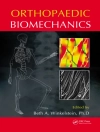<p><strong>The definitive work on the diagnosis and treatment of portal hypertension</strong></p><p>Previously published by the Society for Interventional Radiology (SIR), this fully revised and updated third edition of <cite>Portal Hypertension: Imaging, Diagnosis, and Endovascular Management</cite> is the first volume in collaboration between Thieme and the SIR. Edited by Wael Saad and written by internationally recognized experts, this authoritative volume is a comprehensive guide to the diagnosis and interventional management of portal hypertension. A potentially serious condition, portal hypertension presents considerable clinical challenges due to the delicate nature of the impacted organs, veins, and vessels.</p><p>From pathophysiology to the latest state-of-the-art approaches, five major sections encompass diagnostic, medical, endoscopic, non-vascular, surgical, percutaneous, endovascular, and balloon-occluded methodologies, including indications, complications, and clinical trial results. Throughout this book’s 33 chapters, a Who’s Who of world-renowned interventional radiologists share clinical pearls and step-by-step procedural guidance.</p><p>Several techniques have undergone significant advances since the second edition was published, including Transjugular Intrahepatic Portosystemic Shunt (TIPS), Balloon-Occluded Retrograde Transvenous Obliteration (BRTO), Balloon-Occluded Antegrade Transvenous Obliteration (BATO), and variations on TIPS, and all these are featured herein.</p><p><strong>Key Highlights</strong></p><ul><li>Hepatic and portal venous anatomy relative to procedural approaches</li><li>Nearly 250 figures elucidate anatomical structures and technical methodologies</li><li>TIPS: patient selection, effects on kidney and liver function, hemodynamic changes, intravascular ultrasound guidance, Doppler surveillance, and utilization for Budd-Chiari Syndrome and liver transplantation</li><li>TIPS clinical study outcomes for variceal bleeding, ascites, and hydrothorax</li><li>BRTO and BATO techniques, clinical study outcomes, and utilization for gastric varices</li><li>Management of mesenteric and portal vein stenosis, thrombosis, and hypersplenism</li></ul><p>This remarkable book is a must-have tool for interventional radiologists and for all those who care for patients with portal hypertension, from residents to practicing clinicians.</p>
Inhaltsverzeichnis
<p><strong>Section I Pathogenesis and Diagnosis</strong><br>Chapter 1 Pathophysiology and Classification of Liver Cirrhosis and Portal Hypertension<br>Chapter 2 Clinical Presentation of Portal Hypertension<br>Chapter 3 Noninvasive Cross-Sectional and Vascular Imaging of Portal Hypertension<br>Chapter 4 Indirect Portal Pressure Measurement and Carbon Dioxide Wedged Hepatic Portography<br>Chapter 5 Hemodynamic Evaluation of the Liver and Transjugular Liver Biopsy<br><strong>Section II Medical, Endoscopic, Percutaneous, and Surgical Management</strong><br>Chapter 6 Medical Management of Portal Hypertension Complications<br>Chapter 7 Endoscopic Classification and Management of Varices<br>Chapter 8 Paracentesis and the Le Veen and Denver Shunts<br>Chapter 9 Surgical Management of Portal Hypertension<br>Chapter 10 Percutaneous Management of Surgically Placed Portosystemic Shunts<br><strong>Section III Endovascular Management: Shunts and Splenic Embolization</strong><br>Chapter 11 Patient Selection and the Effect of Transjugular Intrahepatic Portosystemic Shunt on Liver and Kidney Function<br>Chapter 12 Hepatic and Portal Venous Anatomy Relative to the Transjugular Intrahepatic Portosystemic Shunt Procedure<br>Chapter 13 Technique for the Transjugular Intrahepatic Portosystemic Shunt Procedure<br>Chapter 14 The Difficult Transjugular Portosystemic Shunt Procedure: Unconventional Techniques<br>Chapter 15 The Intravascular Ultrasound–Guided Direct Intrahepatic Portacaval Shunt<br>Chapter 16 Hemodynamic Changes Following the Transjugular Intrahepatic Portosystemic Shunt<br>Chapter 17 Budd-Chiari Syndrome: Transjugular Intrahepatic Portosystemic Shunt and Hepatic Vein Recanalization<br>Chapter 18 Transjugular Intrahepatic Portosystemic Shunt Reduction for Post-TIPS Hepatic Encephalopathy<br>Chapter 19 Patency Outcomes of Transjugular Intrahepatic Portosystemic Shunts in the Stent-Graft Era<br>Chapter 20 Doppler Surveillance of Transjugular Intrahepatic Portosystemic Shunts in the Stent-Graft Era<br>Chapter 21 Transjugular Intrahepatic Shunts for Variceal Bleeding: Results of Clinical Studies<br>Chapter 22 Transjugular Intrahepatic Portosystemic Shunts for Ascites and Hepatic Hydrothorax: Results of Clinical Studies<br>Chapter 23 The Transjugular Intrahepatic Portosystemic Shunt as a Prelude to and After Liver Transplantation<br>Chapter 24 Management of Mesenteric and Portal Vein Thrombosis in Nontransplanted Patients<br>Chapter 25 Percutaneous Mesocaval Shunts<br>Chapter 26 Splenic Artery Embolization for Management of Hypersplenism and Portal Hypertension<br>Chapter 27 Pediatric Portal Interventions<br><strong>Section IV Percutaneous and Endovascular Management: Transvenous Obliteration</strong><br>Chapter 28 Vascular Anatomy and Classification Schema of Gastric Varices Relevant to Balloon-Occluded Retrograde Transvenous Obliteration<br>Chapter 29 The Conventional Balloon-Occluded Retrograde Transvenous Obliteration Procedure<br>Chapter 30 Balloon-Occluded Antegrade Transvenous Obliteration and Variations of Balloon-Occluded Retrograde Transvenous Obliteration in the Treatment of Gastric Varices<br>Chapter 31 Clinical Outcomes of Balloon-Occluded Retrograde Transvenous Obliteration and Balloon-Occluded Antegrade Transvenous Obliteration<br>Chapter 32 Management of Duodenal Varices<br>Chapter 33 Management of Stomal Varices</p>












